Author Noah Andre Trudeau Discusses the Battle of Gettysburg
NBC's Ann Curry interviews the author of Gettysburg: A Testing of Courage about the strategies and the combat at the Battle of Gettysburg.
NBC's Ann Curry interviews the author of Gettysburg: A Testing of Courage about the strategies and the combat at the Battle of Gettysburg.
The Centre Hill Museum is a historic house museum. The 1823 residence is used to discuss its own history, including Presidential visits and its role in the Civil War. The interior houses decorative arts dating from 1700 through the 1900s. Collection highlights include a circa 1900 aviary of stuffed birds. The structure displays Greek Revival, Federal, and Colonial Revival elements.
The museum offers exhibits.
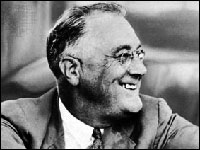
Offering more than 10,000 documents pertaining to Franklin D. Roosevelt's presidency, this website presents documents that include approximately 6,000 pieces of formerly-classified correspondence, reports, and memoranda. Topics include the Atlantic Charter; the United Nations; the Departments of War, Treasury, and State; and the Manhattan Project to develop the atom bomb.
The site also offers 1,000 documents pertaining to U.S.-Vatican relations during World War II, 2,000 documents concerning U.S.-German relations, and full texts of 30 "fireside chats." An exhibit examines "The Special Relationship" between Winston Churchill and Roosevelt and the emergence of an Anglo-American alliance. A mini-multimedia showcase contains one video clip of Roosevelt walking and 11 audio clips of speeches. The site also provides information on Eleanor Roosevelt and the Depression, and includes more than 2,000 photographs.
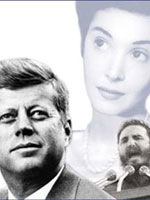
This site focuses on an abrupt change in U.S. policy toward Cuba in 1963. The site includes an audio file of a conversation (3.5 minutes) between Kennedy and his national Security Advisor, McGeorge Bundy, that took place 17 days before Kennedy was assassinated. Kennedy and Bundy discussed taking a softer approach toward Fidel Castro and Cuba, and Kennedy agreed to have secret talks with Castro under the right circumstances. Castro claimed to be open to the idea as well.
The site includes several other supporting items, including eight recently declassified top-secret documents and memoranda supporting and setting up talks between Kennedy and Castro.
The documents indicate that Kennedy saw little advantage in continuing the hard line stance of the U.S. against Castro and Cuba, and believed that a softer approach held strategic value in normalizing relations between the two countries. The papers make it equally clear that Kennedy's successor, Lyndon Johnson, retracted Kennedy's offer.
This site offers three CIA briefing papers and a transcript of a message from Castro to Kennedy. A mini-scorecard allows visitors to track the key figures in the talks. This site allows researchers, students, and teachers access to previously unavailable material, and would be a useful resource for Cold War studies.
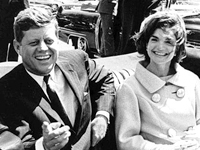
This website is devoted to the life, work, and memory of John F. Kennedy, the 35th president of the U.S. Of primary interest to historians and teachers are the "Historical Resources and Education" and "Public Programs" sections of the website, which shed light on important events in early 1960s political history, including the Cuban missile crisis, the Vietnam War, the civil rights movement, the Peace Corps, the space program, and the 1963 Nuclear Test Ban Treaty. Users unfamiliar with the history of the Kennedy White House might begin with the "Timeline," which puts events important to the Kennedy administration in a larger political and cultural context, or "Biographies and Profiles," which presents a Kennedy family tree and profiles of early 1960s notables such as Fidel Castro, Robert McNamara, and Arthur M. Schlesinger, Jr. "White House Diary" further familiarizes users with Kennedy's day-to-day activities as President.
The website also includes hundreds of historical sources including speeches, photographs, telegrams, correspondence, eulogies for Bobby Kennedy, JFK, and Jacqueline Kennedy Onassis (all accessible through an Advanced Search feature), and transcripts of more than 170 oral interviews with notables such as John Kenneth Galbraith (Harvard University economic professor and Ambassador to India), Supreme Court Justice Felix Frankfurter, singer Harry Belafonte, and President Gerald Ford. In some cases, the original audio files of speeches are also included. Several lesson plans designed for elementary, middle, and high school students use materials from this archive to address topics such as Kennedy's inaugural address, the Cuban missile crisis, and the civil rights movement.
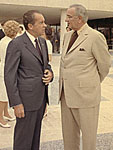
In February 1971 to July 1973, President Richard Nixon secretly began recording phone conversations and meetings, compiling thousands of hours of tape. Created in 2007 by a Texas A&M University history professor, this website intends to provide "the most complete digitized Nixon tape collection in existence."
At present, only a fraction of the recordings are available. Visitors may listen to MP3 versions of over 500 conversations organized by primary conversation participant; 29 conversations organized by topic themes; and more than 2,000 hours of conversations organized by the date of their release to the general public.
Though the site promises that all recordings will eventually be accompanied by full transcripts, accompanying material is spotty. Some recordings are accompanied by corresponding entries from the presidential daily diary, some by general outlines of the recording's topics, and a handful by full transcripts. The recordings vary in quality, from fully audible to inaudibly faint or noise-obscured.
The website is not searchable (the search engine on the home page searches the web at large). As it stands, it may be useful to educators as a casual introduction to the recordings for students, but locating specific content (to accompany lesson plans or complement events being taught in class) would require significant time.
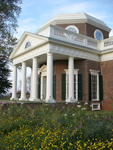
President Thomas Jefferson worked on designing his estate, Monticello, throughout much of his adult life, drawing heavily on classical architecture as well as the French architecture he became acquainted with during his time in Paris in the 1780s. This website presents an interactive map of Monticello, at its height a 5,000 acre plantation—its buildings, fields, orchards, and slave quarters—providing a window into Jefferson's domestic life.
Visitors can click on one of more than 25 locations on the Plantation, and see a short explanation of that place's function, as well as a small selection of current and historical photographs and documents pertaining to that location, including some of Jefferson's original building plans. Visitors can then virtually move inside Monticello itself through a 3-D tour of Jefferson's home, accompanied by text highlighting the social function of each room.
Also offered are virtual tours of the house, highlighting domestic life at Monticello and Jefferson's relationship with farming and gardening. Each of these tours is accompanied by a useful video introducing these topics and providing other background information about Jefferson's life and work.
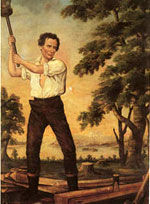
This wealth of historical materials, in a variety of formats, addresses Abraham Lincoln's years in Illinois (18311860) and Illinois history during the same period. The website provides more than 2,300 transcriptions of documents, including correspondence, speeches, treaties, and other official papers. In addition, there are 295 images of Lincoln, his family, friends, associates, and contemporaries, as well as Illinois towns, homes, and businesses, and 63 recordings of songs.
Materials are organized into eight thematic sections: African American Experience and American Racial Attitudes; Economic Development and Labor; Frontier Settlement; Law and Society; Native American Relations; Politics; Religion and Culture; and Women's Experience and Gender Roles. Each theme includes a background essay, relevant documents and images, video discussions by prominent historians, and narrated slide shows. "Lincoln's Biography" divides his life into eight segments with a summary and biographical text by scholars, as well as a bibliography.
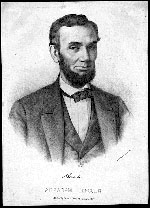
This website features approximately 20,000 documents relating to President Abraham Lincoln's life and career. All of the materials are available as page images and about half have been transcribed. Resources include correspondence, reports, pamphlets, and newspaper clippings. While the documents date from 1833 to 1897, most material was written between 1850 and 1865, including drafts of the Emancipation Proclamation and Lincoln's second inaugural address. A chronological index offers names of correspondents and document titles.
Special presentations on the Emancipation Proclamation and the Lincoln assassination provide introductions, timelines, and 24 images of related documents and engravings. Additional resources include 16 photographs of the Lincolns and key political and military figures of Lincoln's presidency. This is an excellent resource for researching Lincoln's presidency and American politics prior to and during the Civil War.
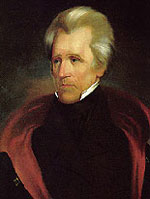
Information on all 43 of the nation's presidents is presented on this website. Each president is featured individually with an in-depth biographical essay, details about the first lady and members of the Cabinet, links to the President's speeches, and discussions with current scholars. The Presidency as an institution is treated thoroughly in the "President at Work" section with essays on general areas of presidential duty: domestic and economic policy; national security; legislative affairs; administration of the government and White House; and presidential politics.
Clicking on "Presidential Oral Histories" or "Presidential Recordings" under the "Academic Programs" tab reveals an additional wealth of information. Recordings are available for Presidents Roosevelt, Truman, Eisenhower, Kennedy, Johnson, and Nixon. After tapes were prohibited from the Oval Office following the Watergate scandal, the Miller Center began to conduct oral history projects, producing hours of interviews with Presidents Carter, Reagan, Bush, and Clinton and their staff.